| Arctic Cat Wildcat Rock Crawling Review
I recently took our 2012Arctic Cat Wildcat and got it setup to take on some rocks at Prairie City SVRA near Sacramento. Now the stock unit would have done fine in the rocks, but I like to push the limits a bit and see if the Wildcat could handle the addition of huge 31″ tires. While I was at it, I added a few other items that helped protect the vehicle from the abuse that tends to be dished out when rock crawling.
The cool thing about the tire and wheel combo I have is I can swap the center out to a different manufacturers lug pattern. The wheels are billet center beadlocks made by OMF Performance and for a guy like me with many UTVs in the stable, it makes it nice to have a set of tires for rock crawling that I can swap to another vehicle without the cost of a new set of wheels.
With the tires mounted up on the Wildcat, I had just gained several inches of much needed ground clearance. I could gain a little more by increasing the pre-load on the coil springs, but I decided to leave them the way it was setup at the factory. A lift kit is another way to raise the vehicles body, and if I was using this Wildcat in the mud or in the rocks full-time, I would surely look into one. With the additional ground clearance taken care of, I turned my attention to protecting the body and under carriage. First up was doing something for the rocker area. This is the area of the body right under the door. When rock crawling, you try and put the tires on top of the rocks so the skid is up and away from them. Well the next thing that happens is when your front wheel is coming down off a rock, that rock can hit the rocker and cause damage. With the Wildcat, there is a nice tube that runs along the bottom of the skid on the edge. The problem is the plastic takes off from that point and is wider that anything else. This is a recipe for damage when trying to navigate around a corner with a rock on the edge. Jeeps for years have been dealing with this issue by adding a rock slider that takes the hit instead of the body. For some UTVs, there really isnt a way to add a rock slider without adding a customized tube that is welded in place. Thankfully, Arctic Cat has an accessory (P/N 1436-727, $229.95 U.S.) that bolts up so I did not have to custom make something.
With tires, rock sliders and skid plates in place, we were ready to go play in the rocks. Prairie City SVRA has a nice 4×4 area that has many different types of rock obstacles. It is a great place to test out vehicle like the Wildcat in a variety of scenarios. Here is what we found. The 17 inches of front wheel travel is off-the-hook! it is amazing to watch the front end articulate to keep the tires on the ground even under extraordinary flex. We kept the rear anti-sway bar in place so the rear did not move like the front, but it should not be too hard to remove a link and take the bar out of the equation if you are looking to get every bit of articulation possible. With what I saw, I dont think it is necessary for most scenarios.
The Wildcat, like most other sport UTVs has an always locked rear differential. Great when you need both wheels turning, but in tight situations, a locked rear-end will make the car push (go straight), even when the wheel is turned. A selectable rear locker would greatly decrease turning radius and make the Wildcat more nimble. Approach and departure angles measure from the bottom of the tire to the underside of the vehicle. The greater the angle the steeper the ledge you can go up to without the bumper or body hitting the ledge before the tires. If the front bumper sticks out too far it will hit the rocks before the tires have a chance to crawl up. And going down steep ledges the nose will bury in the ground before the wheels reach level ground. With its long wheelbase and the 31″ tires, I cannot imagine a better approach or departure angle setup for a UTV. This is a nice plus for extreme rock crawling.
The Arctic Cat rock sliders did a good job at protecting the plastic on the side of the car, but the way they attach in the front sticks below the skid plate and can get hung up on a rock pretty easily. It would be better to have them attach in a way that does not go below the skid plate. We experienced no interference with the big 31-inch tires on the Wildcat. Even on the front-end when compressed or at full-droop the tires never made contact with the body. This is great news for those that want to run big tires. But like I said before, these tires are too big for anything but rock crawling. And on the Wildcat, the clutch felt like it handled the big rubber without issue. We did feel a little bit of a clunk in the steering box at random times, but did not experience any other issues. With tires this big, you need to drive smooth. The huge weight and circumference could wreak havoc on the transmission, differentials, steering, axles and CVs. As with most everything in life, gain in one area does come with cost. If I was going to rock crawl with the Wildcat on a regular basis, I would probably stick with a 28-inch tire and add a lift kit. Overall, we had a great time in the rocks with our Wildcat. For a vehicle that is geared more towards rough terrain at high speeds in the dunes and desert, I felt the Wildcat did well. Not my favorite UTV for rock crawling, but it was near the top! More Wildcat 1000 Resources:
Manufacturer Info: Arctic Cat Inc. Website: www.arcticcat.com Phone: 218-681-8558 About Arctic Cat: |
Textron Trip Reports UTV Product Reviews

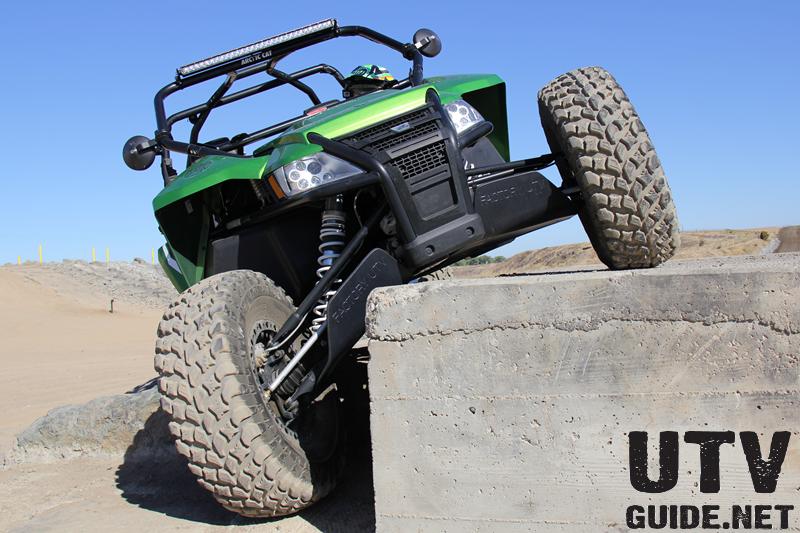
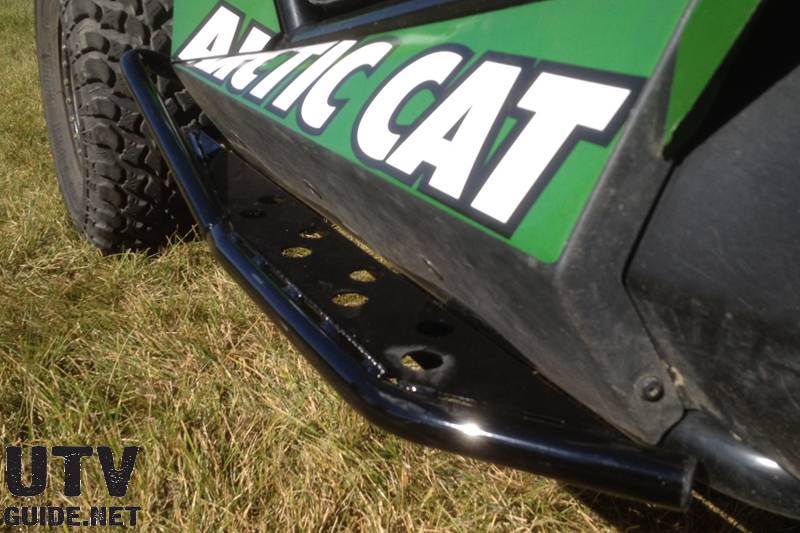
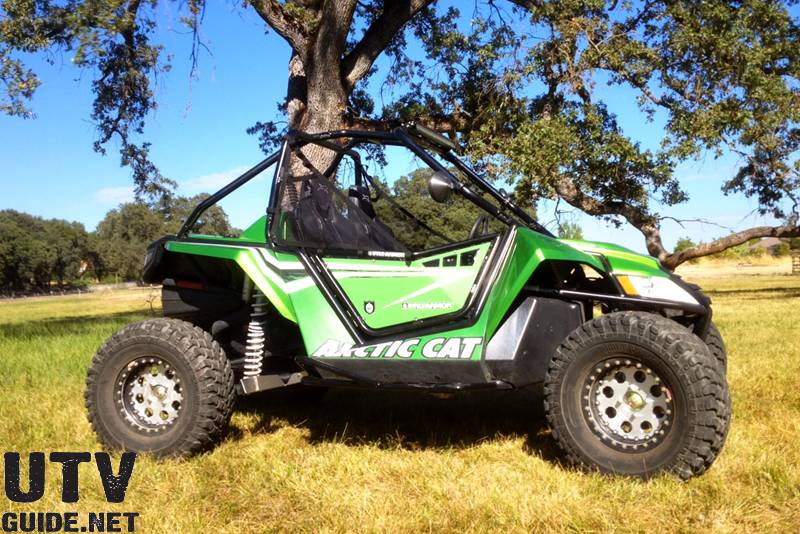
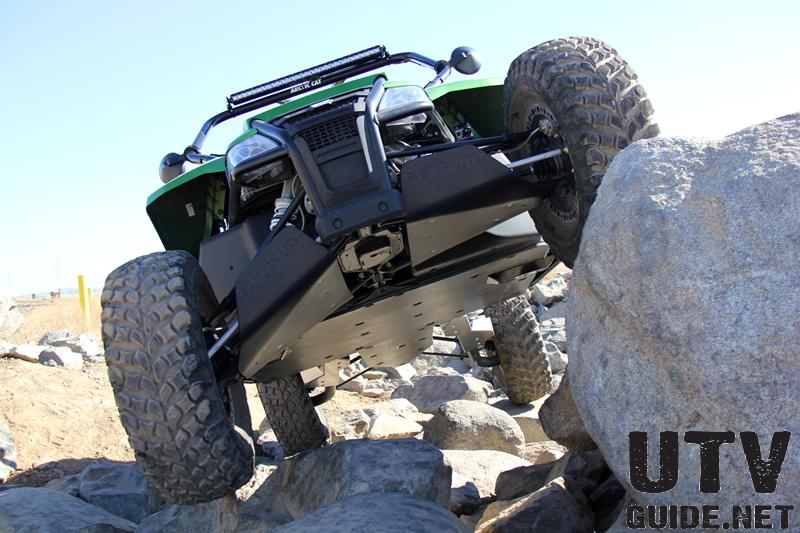

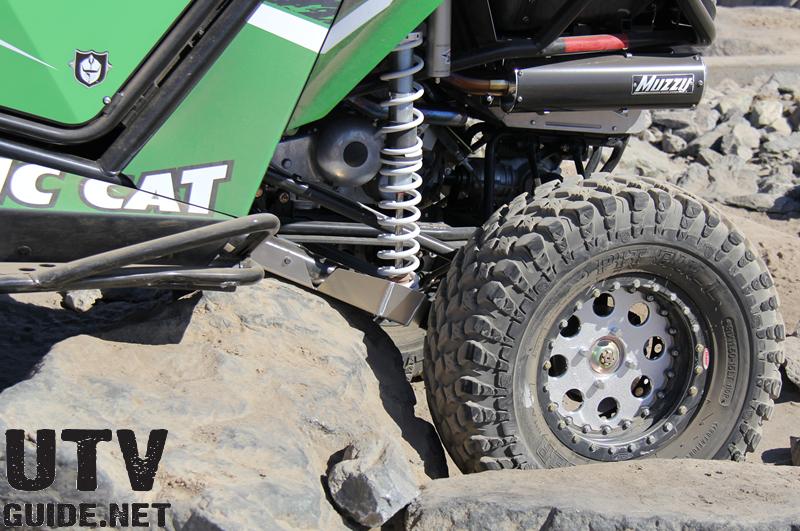
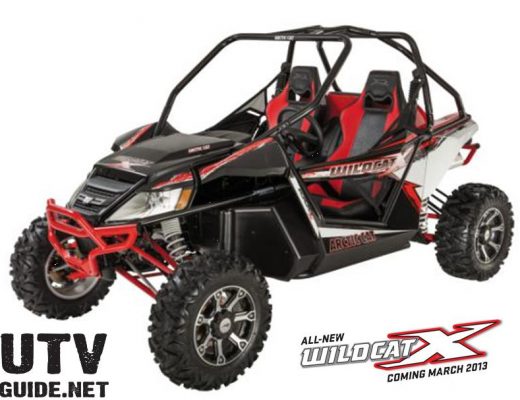
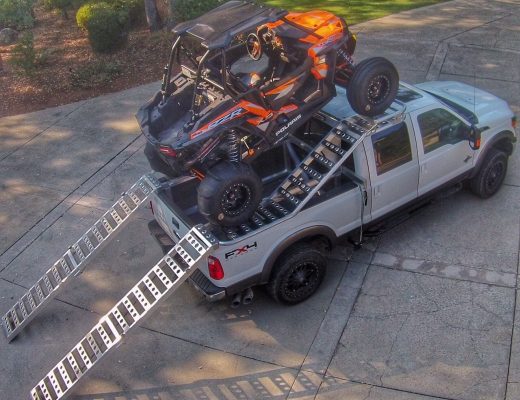
No Comments